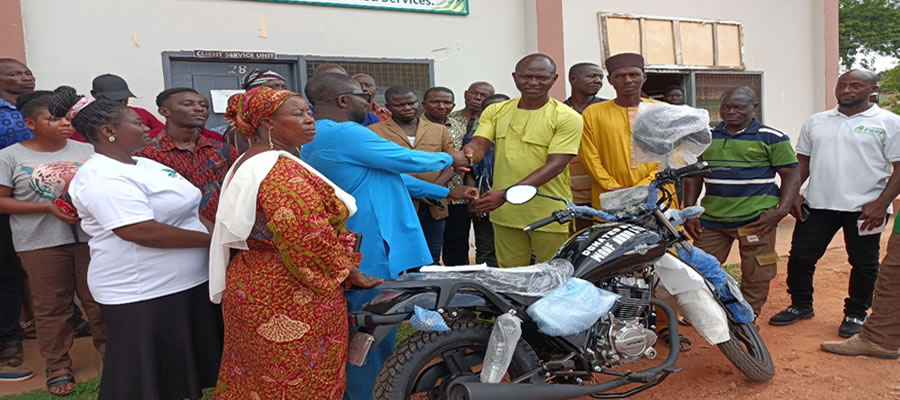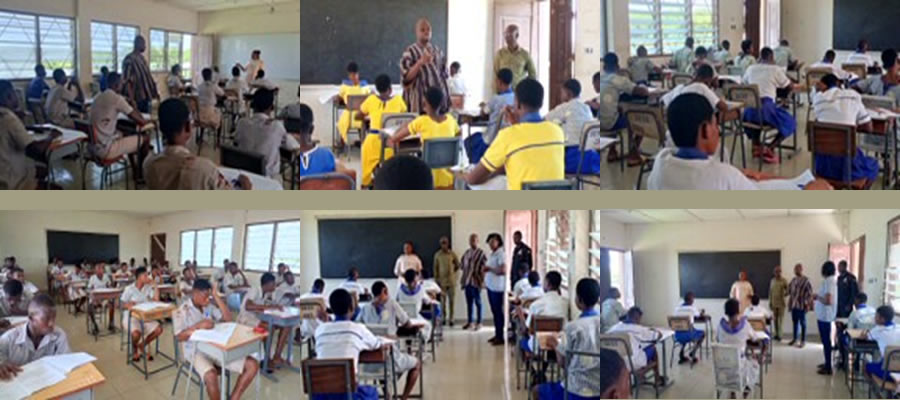

Revenue Projection
(i) Internally Generated Fund (IGF)
The main sources of Internally Generated Fund (IGF) for the Assembly are Rates, License, Lands, Fees and Fines. Although the District is quite a new one, statistical analysis of total revenue from the various sources between 2004 and 2006 shows that there is tremendous growth of about 38% in the general revenue situation.
This is due to the fact that, more revenue sources like Lands and Investment which were not collected in 2004 were introduced in 2005. Again revenue collected in 2004 was just for four months as against twelve months in 2005. The growth rate based on the past trends is not realistic enough to be used for future projections. Projections for the IGF therefore assumed a more realistic growth rate target of 30% annually for all the revenue items.
Transfers
Transfers from central Government to the Assembly is in the form of Grants mainly for salaries and the District Assembly Common Fund. (DACF) for development investment financing. Within the Two years of its existence, the District Assembly has experienced a growth of 13% in the DACF 117% in the total grants transferred to it from central Government, and -74.7% in the HIPC Fund. Going by the past trend with the assumption that all things remain constant, the projections of the DACF and the general grants.
The underlying assumption in the projection of Pre-school infrastructure and teacher demand is that, the age group at this level of Education is 4 – 5 years. Out of the total of 5,624 children within this age group in the District, 5,428 representing 96.5% of the age group are actually in school.Again, assuming that, enrolment per annum increases by 1.5% to reach 100% by 2009 and given the population growth rate of 3.0%, the classroom requirement for pre-school.
Projection of Health facility and staff Facility Projection
According to M.o.H, Primary Health Care guidelines, a Health Centre should serve 5,000 – 10,000 people, a Polyclinic about 10,000 – 150,000, and a District Hospital 175,000 – 240,000 people.
The current population of the District can support at least a Polyclinic which is higher in hierarchy than the existing Health Centre. It is recommended that by the end of the plan period when the population will be about 102,279, the current Health Centre could be upgraded to a District Hospital. Again, the rural clinics should be improved in terms of their level of services so as to influence the their level of use by health seekers. Other areas with difficulty in accessing health services like Krabonso and Ayorya should be served with CHPS facilities.
Agric Extension Services
The Agriculture sector accounts for 72.7% of the total workforce estimated to be about 45% of the District population. In projecting the Agric Extension needs of the District, the underlying assumption is that, the proportion of the labour force in Agriculture remains the same throughout the plan period.
Analysis of POCC
District Development Problems, Potentials, Opportunities, Constraints And Challenges (POCC).
The assessment of potentials, opportunities, constraints and challenges of the district is an important part of the planning process. This analytical process affords stakeholders in the plan preparation and implementation to actually realise the potentials and opportunities in the district. When this is known, policymakers and implementers will know how to translate these into actions. The constraints and challenges also present the limitations and possible situations, which can derail the development activities or efforts.
The POCC for the Kintampo South District is input in a matrix. This is presented in the three thematic areas of Human Resources Development and Basic Service, Good Governance and civic responsibility and priorities for private sector competitiveness.
Financial Institutions
Banking services form an integral part of an economy. The intensity of business transactions and the vibrancy of an economy depends on the level of variety of banking services available and the extent to which the people utilise the service.
The district has only one (1) Rural Bank, which is an agency of the Kintampo Rural Bank. The Bank is located in Jema, the district capital. The bank assists in financial mobilization and advice to its customers in the district.
Date Created : 11/17/2017 1:31:43 AM











 facebook
facebook
 twitter
twitter
 Youtube
Youtube
 +233 593 831 280
+233 593 831 280 0800 430 430
0800 430 430 GPS: GE-231-4383
GPS: GE-231-4383 info@ghanadistricts.com
info@ghanadistricts.com Box GP1044, Accra, Ghana
Box GP1044, Accra, Ghana